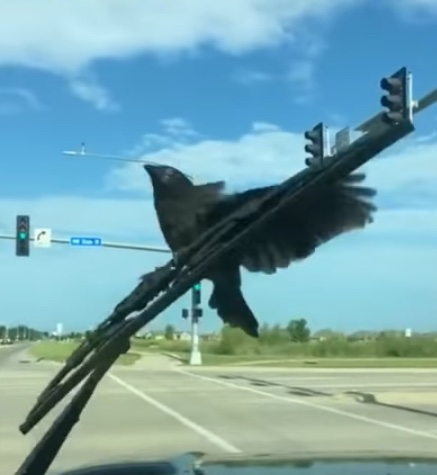
It is not easy to define what play is, but easy to recognize. A criterion for play is that it has no other (conscious) purpose than just being play, something that amuses at the moment and is not the result of compulsion or stress.
Already in the 1800s, Charles Darwin had considered play:
One may be skeptical about Huber's ant observations; maybe the bite was communication, maybe Huber was right. The important question is the question of ant consciousness.
This is not about hierarchies of consciousness. Each creature is equipped with abilities and senses that guarantee its place in the Earth's ecosystem.
We can't imagine how a bumblebee experiences the world, but put a key in the middle of a blooming meadow and walk away. There is little chance you will find the key again.
A bumblebee does it over and over again. You probably don't notice the bumblebee's nest when you walk by, but the bumblebee can fly from far and still find its way back home.
Leopard, goat, dung beetle, water flea, all have their perspectives on the world, some narrow, others broad and may be more diffuse. An amoeba, we may assume, has a narrow perspective. A chaffinch has more to take into consideration.
Despite such widely differing perspectives, there are behaviors, including play, that are shown in many of Earth's creatures.
__________________________
Crows have a lot going on
Playing, teasing, solving problems
They are sometimes called
’winged monkeys’
On Youtube there are a few examples
of crows playing in the snow
Sometimes with improvised surfaces
A jar lid for example
Some crows take an interest
in car windshield wipers
Here's an example
of the opportunist's version
of a swing ride.
Hardly likely that a crow
with the quick reactions of a bird
would end up in this situation
if it were not of free will.
Due to rights reserved
the next example can only be viewed on Youtube
Click on the image or the text and select ’Visa på Youtube’

Stubborn Crow refuses to let go of windshield wipers
It is not possible to determine for sure
whether these two were looking for an adrenaline rush
or if they were just looking for a lift
as the next example shows
It should be easy to dismiss the idea of hitchhiking
What reason is there
for a bird capable of flight
to hitchhike a car?
Corvids are known for their playfulness
When it comes to adventurous games
and adrenaline rush
the macaques have found a solution of their own
Another side of play
is social play
that preserves and strengthens
the bonds between two
who are already friends
Like these two
Their game has an element of a teasing
”Haha, you can't catch me”
Monkey plays with his cat friend.
byu/Random_Average_Human inMadeMeSmile
The crow in the following clip
doesn't play with just any dog
and the dog differentiates
between the crow and other birds
Otherwise, would'nt the world be full
of dogs and crows playing with each other?
What makes this example stand out
in particular is the complete trust of the crow,
how vulnerable it dares to be
in the face of the dog's sharp teeth
That trust is not needed in the following example
where a dachshund and a turtle
share interest in a ball
There is no reason to exclude
that they both enjoy the actions of the other
In that sense they play with each other
They are playing with the ball,
but also with each other
Notice in particular
how the turtle at one point (0'19)
looks for the dog instead of the ball
and how the game starts again (0'19)
by the dog
turning towards the turtle,
who in turn goes after the ball
Another example
Same set-up
ball, turtle, dog
But the mood is different
Now the play is not light-hearted
Rather the turtle is challenging the dog
who doesn't seem comfortable
with the turtle's use of the ball
Note how the turtle bit the dog's leg
almost at the end of the clip
Notice
how the turtle seeks a position (0'20)
for the next bump (0'31)
And off went the ball!
-> A smooth floor is not a good place for a turtle <-
Here is another turtle
with a targeted bump on the ball
Balls seem to have
a more or less
universal appeal ...
... from small to much larger
Some play
violently with the ball
This was a hoax
A Seriema's natural behavior
is to kill its prey
by throwing it against a hard surface
The Seriema does not play ...
... but so does the budgie
who has found it's own way
to move a ball
On the other hand
for the budgie's impacts
the ball has too much mass
In one of the comments to the following clip
it is pointed out that even if the octopus
was in the game at the beginning
at the end it would have been given
the opportunity to withdraw
when it apperently wanted to do so
Memory from the Covid Pandemic:
The following clip is titled
"At least someone is having fun during quarentine"
Finally
a young orangutan
who tries to start a game
... in vain
__________________________